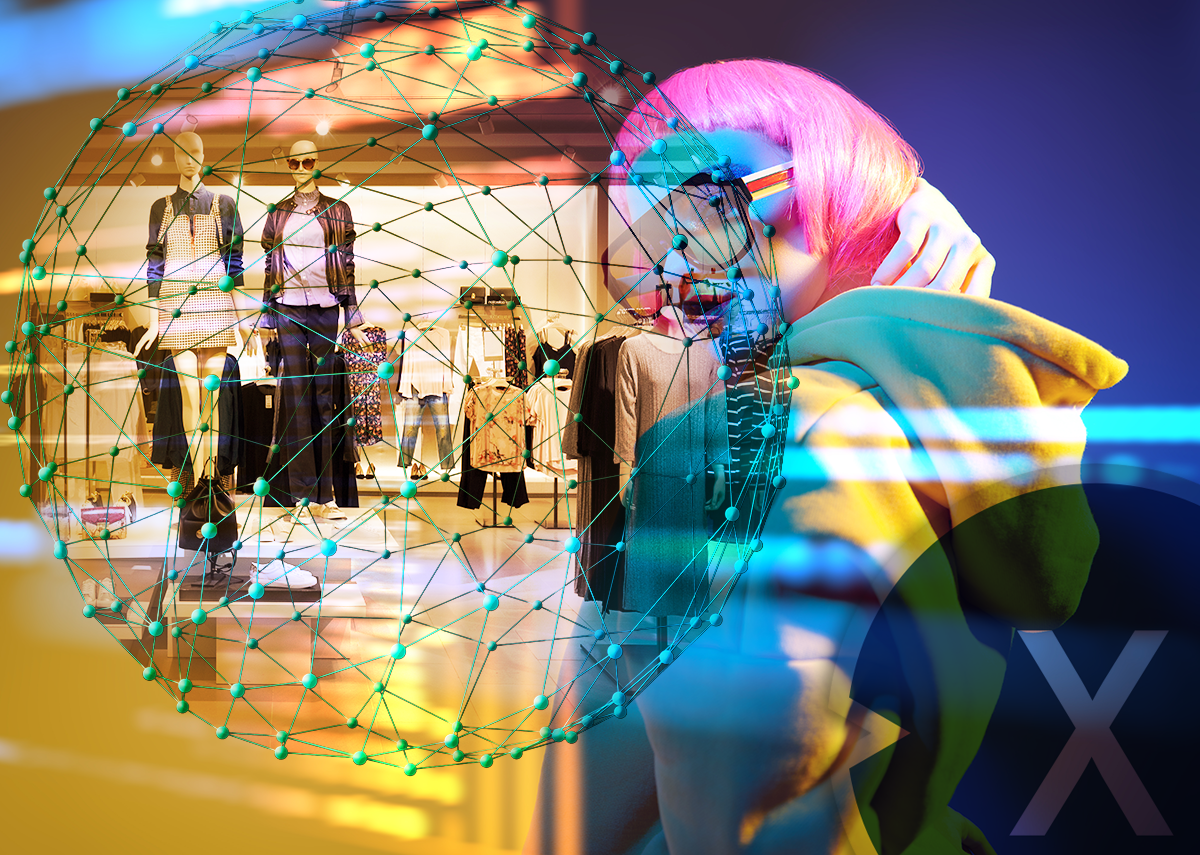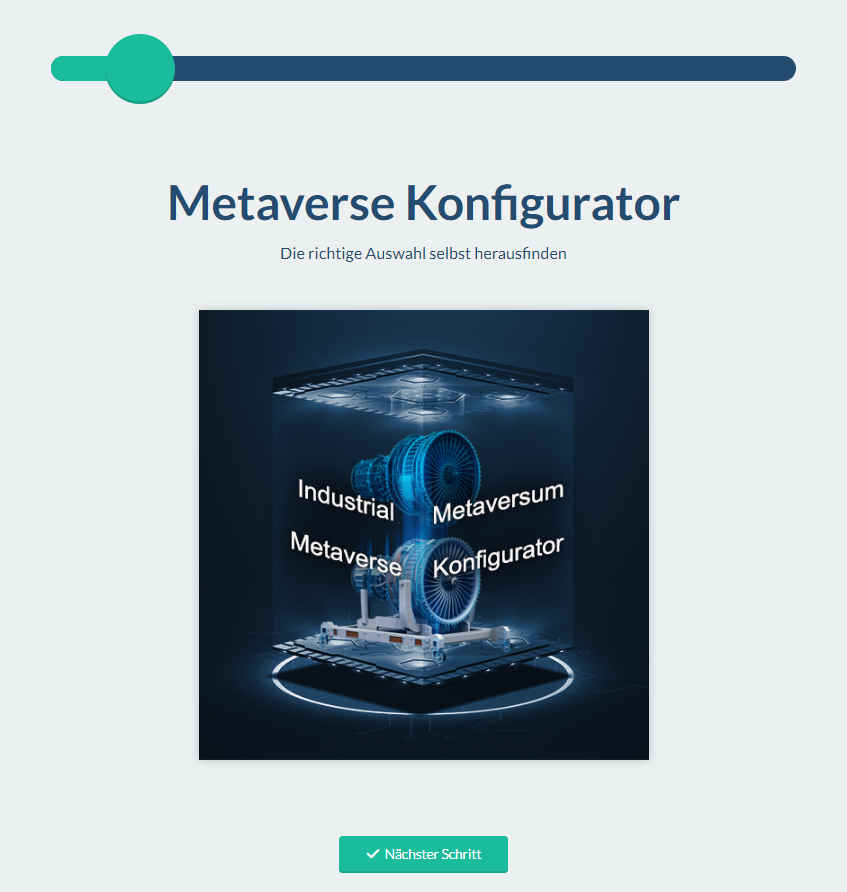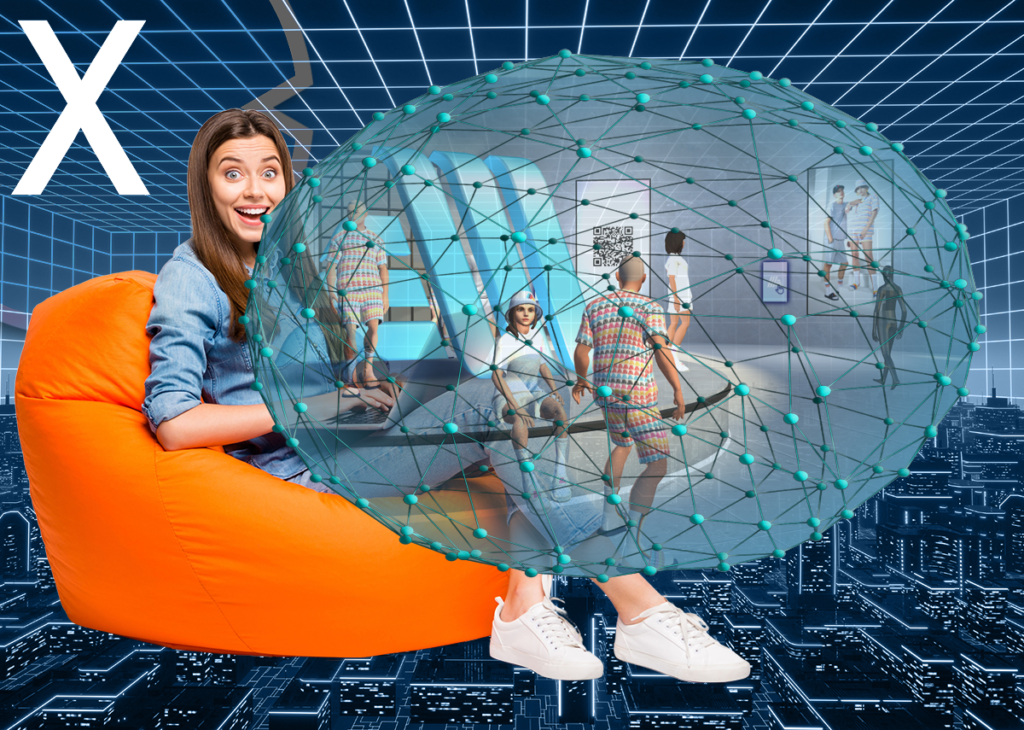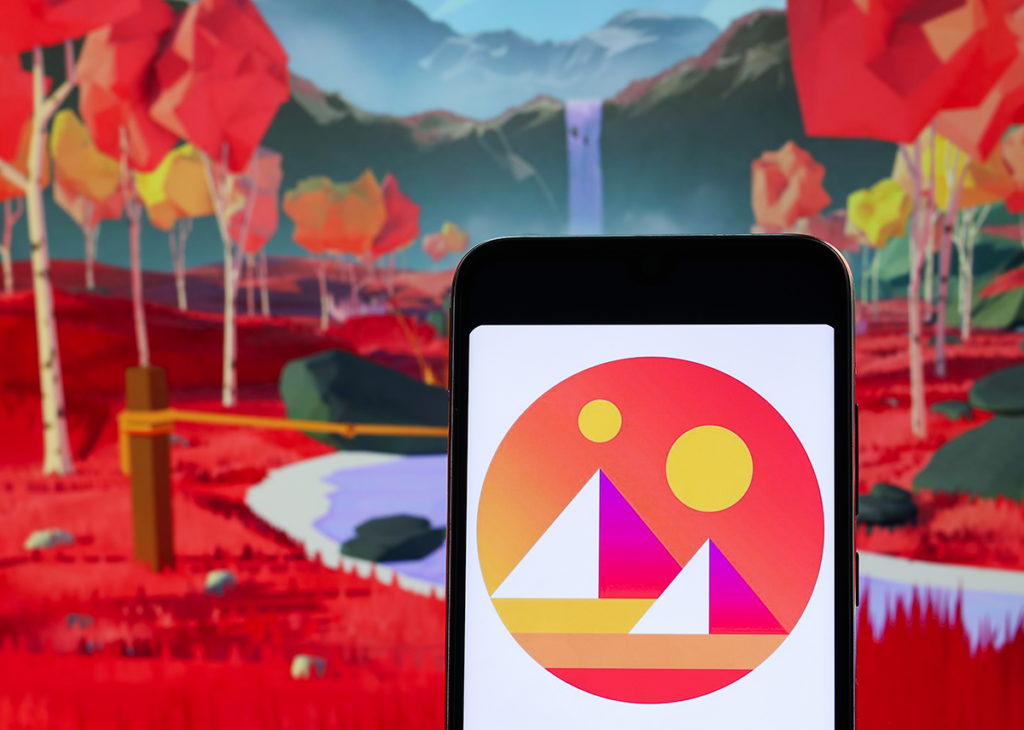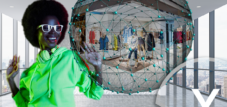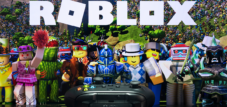Fashion & Fashion Commerce: Metaverse Fashion Week – The fashion industry in the Metaverse – Is this the future?
Language selection 📢
Published on: August 6, 2023 / Update from: August 6, 2023 - Author: Konrad Wolfenstein
Metaverse and the fashion industry: hurdles and challenges
The Future of Fashion in the Metaverse: Big Players and McKinsey's Estimate Under Examination
In this section we want to critically examine the supposedly exciting future of the fashion industry in the metaverse. The Metaverse, a concept powered by AI and virtual experiences, is seen as a promising new era for the fashion world. Here, we'll challenge the claims about NFTs, virtual stores, and breakthrough technologies used by brands like Adidas and Gucci to gain a foothold in the metaverse.
The questionability of NFTs
NFTs (Non-fungible Tokens) have undoubtedly attracted attention, but to what extent are they really contributing to the development of the fashion industry in the metaverse? Brands like Adidas and Gucci may be using these digital assets to enter the metaverse market, but the question remains whether they actually provide value to customers. Linking the physical and virtual worlds may be theoretically appealing, but questions arise about the long-term relevance of this technology.
Virtual shops – reality or fiction?
Platforms like Decentraland and Roblox may promote the idea of virtual stores, but how realistic is an actual shopping experience in such an environment? Technology may make it possible to experience products virtually, but the question remains whether this can actually replace the traditional way of shopping. Will the fashion industry really benefit from this technology, or is it more of a short-lived fad?
The hurdles in Meta's Horizon Worlds
Meta's Horizon Worlds may be considered a major player in the Metaverse, but what about the actual challenges? Creating a coherent and engaging virtual world undoubtedly requires enormous effort, but will this investment actually bring the desired success for the fashion industry? The need for seamless and on-brand presentation places high demands on companies and requires significant investment.
Fashion and gaming – a questionable interaction
The success of Tommy Hilfiger and Christian Louboutin may serve as proof of the successful fusion of fashion and gaming, but it should be remembered that these are only isolated cases. The question is whether these partnerships with gaming platforms are actually sustainable and offer long-term opportunities. It remains to be seen whether integrating fashion into virtual worlds actually creates the desired opportunities for designers and is not just a passing fad.
Big players – are they really the future?
With giants like Apple, Netflix and Disney entering the Metaverse space, the virtual world may continue to grow in importance. But the question arises as to whether these companies should really lead the way. The introduction of Apple's mixed-reality glasses may offer consumers an even more immersive experience, but the question remains whether this is truly a game-changer for the fashion industry. The innovative power of Netflix and Disney is undoubtedly impressive, but to what extent are their approaches actually relevant to the fashion industry?
McKinsey's estimate – hope or wishful thinking?
McKinsey's estimate that the Metaverse will be worth $5 trillion by 2030 may sound impressive. However, one should keep in mind that such forecasts are often subject to uncertainty and depend on many factors. The fashion industry may benefit from this development, but it is crucial to face the real technological challenges and actually put the needs of customers at the center. Companies should be careful not to be too blinded by a supposedly golden future in the metaverse.
Also look at the possibilities critically
The Metaverse may be an exciting journey into a virtual world full of possibilities, but it is important to think critically about these possibilities. The use of NFTs and virtual stores may seem appealing, but the question remains whether these technologies are actually relevant in the long term. The fusion of fashion and gaming may provide some examples of success, but it is questionable whether this applies to the fashion industry as a whole. Big players may be investing in the metaverse space, but it's unclear whether their approaches will truly determine the future of the fashion industry. McKinsey's estimate may provide hope, but it is crucial to remain realistic and not underestimate the challenges. Let's shape the future with a critical eye and carefully question the potential of the Metaverse for the fashion industry.
Eating out in the Metaverse? More nonsense in store? Absurd with sense and reason!
More about it here:
Our Industrial Metaverse configurator
Just try out our universally applicable (B2B/Business/Industrial) Metaverse configurator for all CAD / 3D demo options:
Xpert (B2B/Business/Industrial) Metaverse configurator for all CAD / 3D data can be used on all devices, one platform!
Suitable for:
Media Review: Metaverse Fashion Week (#MVFW23)
The Metavers Fashion Week (#MVFW23) in March 2023 was another interesting moment in the global fashion industry. Over 60 brands, artists and designers took part in the event and presented a mixture of traditional legacy brands and digital brands. The topic of “Future Heritage” aimed to shape the future of fashion through diverse aesthetics that combine realities and worlds. The #MVFW23 took place in Decentraland, the first decentralized metaverse that offers a platform for users to create, experience and monetize content, and to participate in community -driven events.
However, the second edition of Metaverse Fashion Week saw a lower number of visitors compared to last year, but organizers and fashion brands are optimistic and intend to expand further in the Metaverse. The likes of Adidas, Clarks, Coach, Dolce & Gabbana, Diesel and Marc Cain share their experiences and future plans. The event recorded 26,000 visitors compared to last year's impressive 108,000 and digital product sales were also down.
Digital fashion, rooted in the early days of the Internet, has recently gained momentum thanks to advances in augmented and virtual reality. The COVID-19 pandemic has further increased its popularity. Well-known fashion brands such as Dolce & Gabbana and Adidas have launched digital collections using NFTs or announced their presence in the Metaverse. The Metaverse includes a virtual space closely related to 3D technologies and linked to blockchain, AR, MR and NFTs. Metaverse fashion exists in two main forms: physical clothing made wearable through AR or VR, and fully digital fashion sold directly to avatars or traded as NFTs.
Leading brands like Gucci, Balenciaga and Nike have already embraced the metaverse, offering virtual products and experiences to appeal to tech-savvy consumers. The Metaverse's potential for sustainability is highlighted as it could reduce the fashion industry's environmental impact by enabling virtual showrooms and product presentations, thereby minimizing production, reproduction and fashion waste. However, it is important to consider the challenges and opportunities of digital fashion in order to work towards a more sustainable and ethical industry, both in physical and digital terms.
MVFW23: The vision of the “Future Heritage”
The guiding theme of the #MVFW23 was “Future Heritage”. The aim was to shape the future of fashion and use various aesthetics that combine different realities and worlds. The event took place in the virtual space of the Decentraland, the first decentralized meta verse. Decentraland offered the participants an extraordinary platform to create, experience and even monetize content. The enthusiasm was noticeable when the virtual worlds merged with fashion and the boundaries between physical and digital experience.
Digital fashion on the rise
Digital fashion is a phenomenon that has its roots in the early days of the Internet but has seen rapid development in recent years. An important driver for the increasing popularity is technological progress in the area of augmented and virtual reality. The COVID-19 pandemic has further reinforced this trend as people increasingly sought innovative ways to experience and express fashion without having to be physically there.
Well-known fashion houses such as Dolce & Gabbana and Adidas have recognized the importance of digital fashion and launched their own digital collections using NFTs. NFTs (Non-fungible Tokens) are an important part of the Metaverse as they allow digital artwork and fashion collections to be unique and non-interchangeable.
The Metaverse and its possibilities
The Metaverse is a virtual space closely linked to advanced technologies such as blockchain, augmented reality (AR), mixed reality (MR) and NFTs. It offers an unprecedented opportunity to create, explore and interact in digital worlds. Metaverse Fashion Week was just a taste of the immense potential that this virtual reality holds for the fashion industry.
A crucial aspect of the Metaverse is that it blurs the lines between physical and digital fashion. On the one hand, there is physical clothing that is augmented by AR or VR. This means consumers can try on garments virtually before purchasing them. This optimizes the online purchasing process and reduces the return rate, which in turn promotes sustainability.
On the other hand, there is fully digital fashion designed specifically for avatars or as NFTs. In this space, brands such as Gucci, Balenciaga and Nike have already developed innovative products and experiences to meet the needs of tech-savvy consumers.
Metaverse Fashion Week: Strong brand presence
Metaverse Fashion Week brought together brands like DKNY, Dundas, Perry Ellis and Tommy Hilfiger across three platforms. The event offered participating brands a unique opportunity to strengthen their identity in the metaverse and expand their brand presence.
Adidas' First All-Digital collection and innovative presentation
Adidas set a milestone at Metaverse Fashion Week with its first all-digital collection. The brand showed how you can push the boundaries of virtual reality and set new standards. Viewers were amazed by the creative display of the products, which could revolutionize traditional shopping.
Dolce & Gabbana's “Future Reward” designs and the power of creativity
Dolce & Gabbana presented her “Future Reward” designs at the Metaverse Fashion Week. The brand again proved that creativity and innovation in metavers have no limits. The virtual fashion show enabled Dolce & Gabbana to interact with their target group in a way that would not be possible in the physical world.
Diesel's Interactive Party and Future Projects
Diesel CEO Stefano Rosso is extremely happy with the success of their interactive party. Diesel plans to explore more projects and partnerships in the metaverse. Metaverse Fashion Week gave Diesel the perfect platform to interact with her audience in a completely new way.
Marc Cain's Virtual Leohearts Blazer and Mask: Limited Exclusivity
Marc Cain created a feeling of limited exclusivity with her virtual Leohearts blazer and mask. The limit of 1000 pieces gave the products a touch of luxury and exclusivity. The response from visitors has been overwhelmingly positive, and the brand plans to continue expanding its interactive 3D experiences.
Sustainability and ethics in digital fashion
Metaverse Fashion Week also highlighted the potential benefits of the Metaverse for a more sustainable fashion industry. By using virtual showrooms and product presentations, the need for physical production and reproduction could be significantly reduced. This would not only reduce the fashion industry's ecological footprint, but also pave the way for a more resource-efficient future.
However, we must not forget the challenges and ethical questions that come with digital fashion. Data protection and cybersecurity are crucial aspects that must be carefully considered to gain consumer trust. Furthermore, we must ensure that the rights and needs of workers in the supply chain are respected, including in digital production.
Shaping the future of fashion
Metaverse Fashion Week (#MVFW23) showed that the fashion industry is open to progressive developments towards a digital future. The combination of physical and digital fashion opens up exciting potential for both brands and consumers. Particularly noteworthy is the clear focus on sustainability and ethics, which together create a fashion industry that is innovative, responsible and future-oriented.
The second Metaverse Fashion Week: review and outlook
The second edition of the Metavers Fashion Week recorded a decline in the number of participants compared to the previous year. Nevertheless, the organizers and most fashion brands are optimistic and plan to further expand their presence in the virtual world. Brands such as Adidas, Clarks, Coach, Dolce & Gabbana, Diesel and Marc Cain shared their experiences and upcoming projects in the virtual moderate. The virtual fashion Week, which took place on platforms such as Decentraland, Spatial and Over, attracted 26,000 visitors compared to 108,000 in the previous year. The income from digital products decreased from $ 76,757 to $ 26,700. Nevertheless, diesel inspires the participants with interactive experiences and exclusive NFT clothing. Coach received positive feedback for her tabby experience and plans to explore further metaverse projects. Adidas presented a digital collection in her Decentralum lounge and received enthusiastic feedback. Dolce & Gabbana showed the winners of the “Future Reward” design competition and their plans for an increased presence in meta -verses. Marc Cain designed a virtual Leohearts blazer and a mask that recorded high demand. Alena Glimpel, team leader for digital collection development at Marc Cain, expressed her enthusiasm for the creative community and the 3D experiences on the occasion of the 50th anniversary of the brand. The second edition of the MVFW focuses on the topic of “Future Heritage” and contains luxury modem brands that are hugging web 3 and planning other meta-verse projects.
The decline in visitor numbers and revenue
The decline in attendance and revenue compared to last year may seem disappointing at first, but it should not outshine the positive developments that took place during the event. The fact that 26,000 people attended the virtual fashion week shows that there is still a lot of interest in the metaverse and the connection between fashion and technology. Digital product revenue may have fallen, but this does not necessarily reflect the quality or interest of visitors. Rather, it is because the market is still in its infancy and will continue to develop.
The successes of the individual brands
Despite the decline in the overall participation, there were some remarkable successes of individual brands during the MetaVer Fashion Week. Diesel relied on innovative interactive experiences and exclusive NFT clothing, which inspired the participants and created a positive brand experience. Coach received praise for her tabby experience, which shows that creativity and uniqueness are rewarded in the virtual fashion world. With its digital collection and the Decentraland lounge, Adidas was able to inspire visitors, which creates a promising basis for future projects. Dolce & Gabbana scored with the “Future Reward” design competition and thereby create community integration and long-term binding. Marc Cain set trends with the virtual Leohearts blazer and the mask, which generated high demand and further strengthened the brand.
The future of the metaverse in the fashion industry
The second edition of the Metaverse Fashion Week shows that the fashion industry is willing to exploit the potential of the meta -verse. The topic of “Future Heritage” underlines the desire of the luxury modem brands to transfer their traditions into the virtual world and to create new, exciting experiences for their customers. The positive response to interactive experiences and unique virtual collections indicates that the combination of fashion and technology has a promising future.
Still positive feedback
Despite the decline in the number of visitors and income at the second meta -verse fashion week, the successes of individual brands and the positive feedback show that the meta verse is a promising terrain for the fashion industry. The progress in the virtual fashion world is just the beginning, and it is expected that the fashion industry will continue to invest in virtual reality. The “Future Heritage” thematized Fashion Week has shown that the combination of tradition and technology can create a unique and exciting experience for customers. The luxury modem brands are on the right track to fully exploit the potential of the meta verse and further expand the limits of the fashion industry.
Hopefully the fashion industry will carefully address the opportunities and challenges of digital fashion
The second edition of the Metaverse Fashion Week (#MVFW23) in March 2023 was an important event in the global fashion industry. Over 60 brands, artists and designers took part in the event and presented a fascinating mix of traditional legacy brands and digital brands. Under the motto “Future Heritage”, the future of fashion was designed by a diverse aesthetics that combined realities and worlds. The #MVFW23 took place in Decentraland, the first decentralized metaverse, which offers users a platform to create, experience and monetize content and to participate in community -driven events.
Despite the interesting program, this year's event recorded a lower number of visitors compared to last year. However, organizers and fashion brands are optimistic and plan to further expand their presence and activities in the metaverse. Some of the leading fashion companies, including Adidas, Clarks, Coach, Dolce & Gabbana, Diesel and Marc Cain, shared their experiences and future plans in the digital space.
The rising popularity of digital fashion is due to advances in augmented and virtual reality, which is rooted in the early days of the Internet. The COVID-19 pandemic accelerated this trend as people increasingly sought innovative ways to experience and express fashion virtually without being physically present. Well-known fashion brands such as Dolce & Gabbana and Adidas have launched digital collections using NFTs to harness the potential of the metaverse.
The metaverse offers diverse opportunities for the fashion industry. It includes a virtual space closely linked to 3D technologies and techniques such as blockchain, AR, MR and NFTs. Metaverse Fashion Week showed that there are two main forms of digital fashion: physical clothing augmented by AR or VR, and fully digital fashion sold directly to avatars or traded as NFTs.
Brands like Gucci, Balenciaga and Nike have already recognized the potential of the metaverse and are offering virtual products and experiences to appeal to tech-savvy consumers. In addition to the creative possibilities, the fashion industry is also highlighting the Metaverse's potential for a more sustainable future, as it could reduce environmental impact by enabling virtual showrooms and product presentations, thus minimizing the need for physical production.
The Metaverse Fashion Week (MVFW23) with the guiding theme “Future Heritage” was a foretaste of the immense potential of the metaverse for the fashion industry. Brands such as Adidas, Dolce & Gabbana, Diesel and Marc Cain presented innovative ideas and designs that break the boundaries of virtual reality. The event showed that the fashion industry is ready to take brave steps into the digital future and not to forget the focus of sustainability and ethics.
It is hoped that the fashion industry will carefully address the opportunities and challenges of digital fashion to build a forward-looking, responsible and ethical industry. Metaverse Fashion Week marked the beginning of an exciting journey that could redefine and shape the fashion industry in the virtual worlds of the Metaverse.
Bold steps into virtual reality: MVFW23 shows the fashion industry of the future
The fashion industry has always been characterized by innovation and creativity. With the emergence of virtual reality (VR) and growing interest in the Metaverse, designers and fashion houses have begun to take bold steps into this new dimension. MVFW23 (Virtual Fashion Week 2023) became a landmark event that catapulted the fashion industry into the future. Although the current metaverse may not have convinced everyone yet, the participants of MVFW23 proved that the willingness to break new ground makes all the difference.
A dazzling spectacle in virtual space
MVFW23 took place in an immersive VR world created specifically for this event. Designers had the freedom to showcase their creative visions in virtual settings ranging from futuristic catwalks to surreal landscapes. The boundaries of the physical world were broken and participants were immersed in a digital reality that blurred the lines between fashion and technology.
A global and inclusive stage
Thanks to virtual reality technology, the traditional barriers to attending a fashion week have been broken. Designers, models and viewers from around the world were able to seamlessly participate in MVFW23, regardless of their geographical location. This enabled unprecedented global reach and promoted diversity and inclusivity in the fashion industry.
Digital avatars are taking over the catwalk
A fascinating trend at MVFW23 was the rise of digital avatars as models. Virtual supermodels with lifelike animations presented the designers' collections and fascinated the audience with their elegance and creativity. This bold step into the world of virtuality promises not only a revolution in the way fashion is shown, but also a new level of personalization for consumers.
Interaction and gamification
MVFW23 made the fashion experience more interactive and entertaining than ever. Visitors could navigate their avatars through the virtual exhibition, communicate with the models in real time, and even try on virtual garments to explore their fit and aesthetics. The fashion industry used gamification elements to strengthen audience engagement and create a more immersive experience.
Blockchain and digital authenticity
The fashion industry has always faced challenges in the area of counterfeiting and plagiarism. Blockchain technology was used at MVFW23 to ensure the authenticity of digital garments and accessories. Designers were able to register their creations on the blockchain, allowing consumers to purchase and own real virtual fashion that came with unique certificates.
Sustainability and virtual fashion
An important aspect of MVFW23 was the emphasis on sustainability and virtual fashion. The fashion industry has seen a shift towards more environmentally conscious practices in recent years, and virtual fashion offers new opportunities to reduce the environmental footprint. Digital garments and accessories avoid physical production, shipping and waste while still providing a creative fashion experience.
The future of the fashion industry
Although some critics may dismiss the Metaverse as passing hype, MVFW23 showed that the marriage of fashion and virtual reality holds promise. The fashion industry of the future will likely be a hybrid reality of physical and virtual experience, with the boundaries between these two worlds continuing to blur. Bold moves like those at MVFW23 will help ensure the fashion industry continues to innovate and inspire, ready to take advantage of the opportunities presented by the Metaverse and technology to experience fashion in new and exciting ways.
Xpert.Digital says
Courageous steps into virtual reality: MVFW23 showed the fashion industry of the future. Certainly the current metaverse remains far behind what the multiple times would convince of meaning and purpose and would let most of the critics fall silent. But every beginning is difficult. Therefore, the courage and “madness” like “craziness” are part of this “still” adventurous meta -verse journey. Who still remembers when many believed that the Internet would soon disappear again?
Aldi Süd – The ALDImania Consumer Metaverse (in development?)
More about it here:
New territory for newbies: What you should know now about blockchain, tokens, NFTs, wallets, cryptocurrency and the metaverse
In today's digital world, terms such as blockchain, NFTs, wallets, cryptocurrencies and the metaverse have become increasingly present. For newcomers, these terms may seem confusing and complex at first. Here we try to explain these terms in an understandable way and give you important and interesting details about them.
More about it here:
Dekaverse: DekaBank is in the Metaverse – The Beta Metaverse – Decentraland, Marketing & Gamification
The Dekaverse serves as a kind of testing ground for DekaBank and its customers to explore new technologies and bring them closer to people. The focus here is primarily on blockchain technology, one of the most important innovations in digitalization.
In Decentraland, users have the opportunity to explore how the blockchain works and learn about cryptocurrencies and NFTs. This provides a unique opportunity for those new to these technologies to learn about them and expand their understanding of them.
More about it here:

Xpert.Digital – Pioneer Business Development
I would be happy to serve as your personal advisor.
You can contact me by filling out the contact form below or simply call me on +49 89 89 674 804 (Munich) .
I'm looking forward to our joint project.
Xpert.Digital – Konrad Wolfenstein
Xpert.Digital is a hub for industry with a focus on digitalization, mechanical engineering, logistics/intralogistics and photovoltaics.
With our 360° business development solution, we support well-known companies from new business to after sales.
Market intelligence, smarketing, marketing automation, content development, PR, mail campaigns, personalized social media and lead nurturing are part of our digital tools.
You can find out more at: www.xpert.digital – www.xpert.solar – www.xpert.plus



